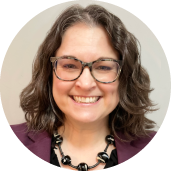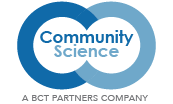In parts one and two of this blog post series, I discussed the importance of understanding rural as a culture and how to question our biases around rural places and people — as researchers, evaluators, policymakers, and funders — and unpack them through practicing self-reflection. Along with carefully examining our internalized stereotypes and deciding to invest the time necessary to understanding the diversity of rural communities, we need to look, listen, and learn from local sources and rural voices.
When working in new places that are unfamiliar, setting aside assumptions and recognizing biases are key steps. However, we also need to be curious, approach with humility, and expect to learn and engage with new voices and perspectives. By taking a fresh look at existing data and stories around rural strengths, listening to community leaders, and continuously learning, we can deepen our empathy and expand our toolbox on what it takes to support rural community thriving through thoughtful investments and respectful engagement.
Look It Up
Do your homework. Before engaging with a rural community for the first time, it is important to do our homework. Looking up what we can publicly find about the community in advance of showing up there, and certainly before asking community members to give us their time, is a way to show respect and reduce the number of questions we need to ask. This means leveraging available information through websites, news media, any relevant reports and data, and knowledgeable people in our network as a starting point for answering key questions about community needs and strengths. These sources can provide insights into the history of the region — economically, socially, civically, and politically — and the people who live there today, from multigenerational residents to more recent newcomers.
Take a strengths- and asset-based approach. One important approach is to make sure we look up information on community assets and strengths, instead of assuming rural communities are deficient. It is commonplace for researchers and funders to look for data on challenges, as that helps identify needs and gaps that might be filled by investment and community capacity building. This might include data on population change, poverty, unemployment, mine and plant closures, and mortality rates. While these data can be important in understanding the current circumstances of a community, they don’t point to the strengths and assets that can be built on to support and sustain community thriving.
Asset-based community development has been around for decades, promoting people, institutions, and relationships as strengths to be leveraged. In rural contexts, the Community Capitals framework was developed as a bottom-up asset-identification tool to actively use in community planning. It highlights built, human, financial, natural, political, social, and culture capitals as keys to building on community strengths. Looking for data and stories in these categories can give broad and deep perspective on community strengths while simultaneously pointing toward areas for action to fill gaps. Existing data tools at the county level, like County Health Rankings, and the census tract level, such as Reenvisioning Rural America, offer compiled data on rural places in one place.
Listen Respectfully
No matter what information we find on our own, there is always more to learn from community members. When it is time to engage, there are several ways to approach on-the-ground learning that elevate diverse voices:
- Look for the leaders. These may not be who we expect. It may not be the mayor, the largest landowners, or the traditional powerholders. Many rural communities are organized around mutual support. The leaders may run local community-based organizations or be the hub of a volunteer network providing emergency food or rides.
- Ask questions to learn, rather than confirm. Start by listening to their stories. Ask about their values and experiences, rather than assuming the homework we did was sufficient to show the whole picture. Ask about their priorities instead of sharing an inflexible agenda or decisions you have already made.
- Acknowledge trauma where it exists. Understand the struggles faced by rural residents who include people of color, low-income families, immigrants, and refugees, and appreciate their cultures and strengths. Don’t ignore major personal or community-wide incidents from the recent or deep past. If someone brings up harm that members of the community experienced — like the closing of a school, factory, or prison; a flood or tornado; or a public health crisis — honor it and work to understand the full impact on their lives.
Keep Learning
We are not going to learn everything about a community from looking at a few data points and speaking with a few residents. Being open to new knowledge and willing to continue to adapt our perspective and approach is vital in this dynamic world. There is always room for growth or improvement as funders make investments, track key performance indicators, and listen to community feedback on impact, or as researchers and evaluators collect data and share it back with the community to hear their interpretation. At Community Science, we embrace these practices and this perspective in our work in rural communities.
References
Flora, C.B, Flora, J.L., & Gasteyer, S.P. 2015. Rural Communities: Legacy + Change (5th edition). New York: Routledge.
Currid-Halkett, E. 2023. The Overlooked Americans: The Resilience of Our Rural Towns and What It Means For Our Country. New York: Basic Books.

About The Author
Corianne Payton Scally, Ph.D., Principal Associate and Equitable Community Development Practice Lead, is an expert on affordable housing and community development policies and program implementation, from big cities to small rural towns. She leads research and evaluation using mixed methods and collaborative approaches and provides thought leadership and evidence to inform decision-making and investments. Corianne is passionate about translating knowledge to inspire actions that reduce racial, economic, and geographic disparities between places and populations.
